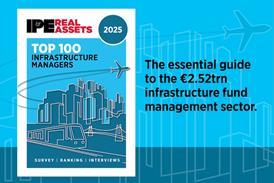The Kraanspoor office project developed by ING Real Estate Development in Amsterdam has been named as one of the five winners at the 2008 Urban Land Institute Global Awards for Excellence in Miami. Kranspoor is a three-storey office complex built on top of an obsolete industrial concrete crane track on the IJ River in Amsterdam. The development was completed in 2006 and comprises 10,000 m[sup]2[/sup] of office space.
The Kraanspoor office project developed by ING Real Estate Development in Amsterdam has been named as one of the five winners at the 2008 Urban Land Institute Global Awards for Excellence in Miami. Kranspoor is a three-storey office complex built on top of an obsolete industrial concrete crane track on the IJ River in Amsterdam. The development was completed in 2006 and comprises 10,000 m2 of office space.
Designed by architect Trude Hooykaas, Kraanspoor was intended to illustrate the interaction between industrial heritage and state-of-the-art architecture, according to ING Real Estate Development. The environmental impact was minimised by retaining the mass of concrete from the original crane track, thereby avoiding disturbance of the riverbed with new foundations. The energy-efficient office space includes a double-skin façade and takes advantage of its waterfront location with a hydrothermal heating and cooling system.
'We are delighted that the Kraanspoor project has won this award and are humbled by the praises of the ULI jury,' said George Jautze, chairman and CEO, ING Real Estate.
'Kraanspoor is a project I am very proud of as it is an exemplary outcome of sustainable urban planning. The creative design by Trude Hooykaas is a prime example of introducing new life to an industrial heritage site in a refined and respectful manner. I am also proud of the sustainable qualities of the building itself - the energy efficiency, the convertibility, and the use of durable and recyclable materials.'
The Global Awards for Excellence competition is part of ULI's Awards for Excellence programme, established in 1979. The criteria for the awards include leadership, contribution to the community, innovations, public/private partnership, environmental protection and enhancement, response to societal needs, and financial success.
The 2008 Global Awards for Excellence winners (developers in parentheses) are:
Adidas Village, Portland, Oregon (Adidas-Salomon North America; Winkler Development Corporation)
Description: Adidas's decision to relocate from its suburban headquarters to an urban campus, converging with Winkler Development's reuse of a former hospital site, has brought 800 employees back to transit and housing, has returned to the community a neighbourhood asset with playing fields and other recreational amenities, and has reaffirmed a new corporate image and branding stewardship.
National Ballet School of Canada/Radio City, Toronto, Canada (Context Development, Inc.)
Description: In a creative partnership - the National Ballet School of Canada, the Canadian Broadcasting Corporation, the city, and a local developer - multiple easements, transfer of development rights, and complex ownership structures have allowed the rehabilitation and reuse of heritage buildings; construction of new residential, academic, and performance facilities for one of the premier ballet schools in the world; public urban spaces; and 414 residential units in 18 townhouses and two residential towers.
Kraanspoor, Amsterdam, The Netherlands (ING Real Estate)
Description: By constructing a new three-story office building atop a functionally obsolete harbor structure on Amsterdam's lJ River, the developer minimised the environmental impact by retaining the mass of concrete, thus not disturbing the riverbed with new foundations, while also preserving a relic of the harbour's industrial past. The energy-efficient office space includes a double-skin façade and takes advantage of its waterfront location with a hydrothermal heating and cooling system.
Beijing Finance Street, Beijing, China (Beijing Financial Street Holding Co., Ltd.)
Description: Just blocks from the Forbidden City, Beijing Finance Street establishes a new nerve centre for China's booming economy. This city within a city - 35 city blocks organised along a central, meandering green space - creates a new, influential model for the country with a sustainable and transit-oriented, mixed-use district for the financial leadership of China.
Tokyo Midtown, Tokyo, Japan (Mitsui Fudosan Group)
Description: Tokyo Midtown represents a strategy by one developer to shift public perception of the Roppongi district from its reputation as a night-time destination to an updated view - one that makes the area as vital during the day as it is at night. The mixed-use development is integrated with, and doubles the area of, a public park to create an environmentally sensitive and commercially active attraction that serves the entire neighbourhood and adds economic value to nearby properties.










